Shannon V. OKeets
Posts: 22095
Joined: 5/19/2005
From: Honolulu, Hawaii
Status: offline

|
quote:
ORIGINAL: gregtherobot
Hi there
this is my first post on this forum. Gotta say: I greatly
appreciate your effort on making the greatest strategy game I know playable on
a computer. Thanks for that!
I want to try and chip in with my thoughts about the AI. I read the forum
and I am impressed with the combined WIF expertise shown here. But I don't
really know by now how you constructed the AI in general terms - that kinda
hinders me to give (maybe stupid) advice how the AI could work. If it is
not too time consuming for you, would you be able to give a short description?
Questions I have would be (no need to answer all of them, just for you to
know what information I am missing):
1) What is the nature of the interaction between the different DM?
2) How is grand strategy implemented - say how does the german AI decide
when to build a hydrogenation plant? I realize that there are different
threads for each major power AI. Does this imply that you programmed (may be
many) fixed grand strategies from which to choose or between which to change?
3) What is the connection between the tactical decision or tactical
developments and the strategy?
Sorry for posting such open questions - to which the answers could be
dozens of pages - but I tried to come up with simple examples (say a list of
Variables influencing the decision between Blitz and assault table) which you
could then explain to me.... But...hm... I failed / ran out of time. Very
complex and not really doable without a layout of the total AI. I thought:
Better ask then!
Different approach: Do you have any document which states (in a
qualitative manner) which processes, interdependencies, decision branches etc. you
have already implemented/taken into account? That would allow me to figure
out stuff that you haven't thought of yet - not implying that you missed
something, but... you know what I mean.
Bye the way, if I am off topic with this post tell me - I can take it.
Cheers
Bot
Welcome.
Here is a portion of the AI Opponent design document. CVs are a metric for measuring the worth of a unit. If this doesn't answer all your questions let me know which ones it doesn't.
===========
.
.
.
.
3.1 Overview and Purpose
There are 8 distinct Decision Makers (DMs) but conceptually they are the same. Each DM has a jurisdiction either by role and/or geography, a superior (except for the Grand Strategist) to whom they report, and subordinates (except for units) for whom they set missions. At the lowest level are the units. Each DM evaluates all possible goals in its rule sets and prioritizes them based on expected outcomes. He then defines missions for his subordinates. Each DM has a memory of recent inputs and outputs to prevent cycling amongst different plans. DMs are somewhat generic with the capacity to be given personality and national characteristics using a ‘profile of weights’.
DMs assess the current game position within their defined area of interest and report that assessment to their superiors. In doing so, DMs orient their analysis by filtering observations based on their current objectives. When making decisions, DMs run through their list of rule sets and evaluate the associated CV risk and reward for each rule set in light of the current objectives. The chosen rule set determines the DM’s immediate goal(s). Goals are decomposed into a list of subordinate goals whenever possible. Goals which cannot be decomposed are processed until they are complete or have failed.
3.2 Responsibilities
3.2.1 Grand Strategist
The primary purpose of the Grand Strategist (GS) is to choose/design a long range strategic plan and keep the other decision makers focused on tasks that implement that plan. At the beginning of every turn, the GS reviews and updates his master plan. The GS authorizes all US entry choices and actions, though the subordinate DMs may decide some of the finer details. For example, the GS may decide to risk a US entry choice or action with a 50% chance of changing the US entry status. Subordinate DMs would decide which specific US entry choice or action to take. Because of its critical importance when looking many turns ahead, the GS decides on the initiative choices: which side goes first and whether to reroll.
More mundane decisions that are the responsibility of the GS are placing markers: in the US entry pool, offensive and defensive markers on the borders of neutrality pact countries, and as USSR reserve build points. The GS also chooses a new home country when, as a major power, his home country is conquered (e.g., France), and makes all decisions relating to the optional rules on intelligence. One final task the GS decides is factory destruction.
The GS has no superior and his direct subordinates are the Manufacturing Council, the Commander in Chief, and Foreign Liaison.
3.2.2 Manufacturing Council
The Manufacturing Council (MC) is primarily concerned with which units should be built. To that end, the MC monitors the factories, resources, convoys, and rail lines that culminate in production points and ultimately, build points. Working from the priorities set by the Grand Strategist and the requests the MC receives from the Joint Chiefs of Staff, the MC generates a master production plan. This production plan runs from the current turn through to the end of the game. The production plan estimates the available build points, the requested unit types, the units in the force pool, and gearing limits. From this source data, the MC decides which units to build for every turn remaining in the game. Obviously, the master production plan is revised each turn based on new estimates.
The MC advises the GS on US entry options related to production. The MC controls the force pools by deciding which units to scrap and whether to build units ahead. Moving, creating, and repairing factories are decisions made by the MC.
Determining routes for resources from their source hex to a factory is also handled by the MC. The MC places requirements upon the Admiralty, the Air Marshal, and the Field Marshals, respectively, to protect against attacks on convoys, strategic bombing, and land attacks whose purpose is to cut rail lines. The defense of factories and resources is built into the CV value of their hexes and therefore requires no special orders from the MC.
The Manufacturing Council has no direct subordinates and reports to the Grand Strategist.
3.2.3 Commander in Chief
The Commander in Chief (CC) is responsible for deciding when and on whom to declare war, which minor countries to align, whether to surrender, liberation details, the spoils of war, neutrality pacts, and proposing peace. The CC decides who controls minor countries, choices regarding Vichy France, Soviet border claims, whether to create the Ukraine, and Germany’s political stance in the Balkans. Most of these decisions require at least guiding principles and sometimes specific directions from the Grand Strategist, with the CC primarily concerned with timing and other minor aspects of these decisions.
One of the critical responsibilities of the CC is monitoring the balance of power on borders where neutrality pacts exist, with an eye on whether to create or break those pacts. This requires close coordination with the Grand Strategist, who decides placement of offensive and defensive markers on those borders.
The CC takes the strategic goals set by the Grand Strategist and passes them through the prism of the existing and future states of war between nations. The results are sent to the Joint Chiefs of Staff as tasks with more immediacy than the goals set by the GS.
Because the CC is focused on current and future enemies, he evaluates and recommends US entry options and actions regarding Japan and the Americas to the GS. The Commander in Chief reports to the Grand Strategist and has the Joint Chiefs of Staff as its sole subordinate.
3.2.4 Foreign Liaison
The Foreign Liaison (FL) is charged with the responsibility of coordinating with allies on: (1) the strategic allocation of resources, and (2) operational and tactical deployment of units in the field. One way of thinking about the separation of powers between the Commander in Chief and the Foreign Liaison is the CC deals with countries that are enemies and the FL deals with those that are allies.
Lend lease and trade agreements are the purview of the FL. Making sure that necessary actions are accomplished but not performed redundantly are also part of the FL’s job. Mostly, the Foreign Liaisons of two friendly counties act as the linkage between their respective Admiralties, Air Marshals, and Field Marshals. This frequently comes up for joining naval forces, protecting convoys, transporting units and resources, and working side by side along a common front line. Joint air operations are another area that requires the FL’s gentle touch.
Arguably the most important task the FL performs is making recommendations to the Grand Strategist about US entry choices concerning: China, the Commonwealth and France, Atlantic convoys, and the USSR. These recommendations require the FL to assess how well the war is going for all current and potentially future combatants. Since those assessments cover the entire globe, all units of all branches of service, all national production capacities, and the territorial holdings of every major power, this is both an enormous and very detailed task. It is essential information for the Grand Strategist when reviewing and choosing the grand strategic plan.
The Foreign Liaison has no direct subordinates and reports to the Grand Strategist.
3.2.5 Joint Chiefs of Staff
First on the list of tasks for the Joints Chiefs of Staff (JCS) is deciding which action to take each impulse. This requires estimating the number of impulses in the turn and heeding the requests from the Admiralty, the Air Marshal, and the Field Marshals. The JCS handles force deployments: placing reinforcements, calling out the reserves, and replacing units with Siberians, heavy weapons units, and Guard Banner Armies. Along these same lines, the JCS allocates rail moves for land and air units and deploys supply depots, supply units, oil points, and naval supply units. One additional strategic task for the JCS is to decide on strategic bombing missions.
At the intersection between operational and tactical decision making, the JCS identifies attack opportunities and allocates limited activities (e.g., air missions) among its subordinates. Another critical decision the JCS makes is the use of offensive chits. This decision has to be approved by the Grand Strategist, which bypasses the normal chain of command. At the most tactical level, the JCS coordinates forces for invasions.
The Joint Chiefs of Staff report to the Commander in Chief and have as subordinates the Admiralty, the Air Marshal, and the Field Marshals.
3.2.6 Admiralty
The Admiralty (AD) is responsible for almost all aspect of naval units throughout the globe. Most of his directives are received from the Joint Chiefs of Staff. Requests for assistance come from the Manufacturing Council, to create and protect convoys, and the Air Marshal and Field Marshals, to transport units and keep them in supply. Within these broad outlines of what to do, the Admiralty has great latitude in the deployment of expensive naval resources to accomplish both offensive and defensive objectives operationally and tactically.
Reporting to Joint Chiefs of Staff, the Admiralty has no direct subordinates other than individual units.
3.2.7 Air Marshal
The Air Marshal (AM) is responsible for all the air units throughout the globe. Most of his directives originate with the JCS and he serves as a central clearing house for allocating air units. There are multiple demands for air units coming from the Admiralty, the Field Marshals, and even the JCS (for strategic bombers). For all air operations the AM decides on the need for fighter protection and allocates them to individual missions. Like the Admiralty, the AM has to address both offensive and defensive needs and make operational and tactical decisions.
Reporting to Joint Chiefs of Staff, the Air Marshal has no direct subordinates other than units.
3.2.8 Field Marshals
Field Marshals have more tasks than any other decision maker. For that reason, multiple FMs frequently exist for each major power so an FM can focus on one theater of operations. Within his assigned theater of operations, the FM has broad latitude on how to use his forces operationally and tactically, offensively and defensively. It is the responsibility of the FM to keep his units in supply and reorganized at the end of each turn.
All of the tactical decisions about making land attacks and defending against same are made by FMs. To them falls the difficult task of making trade offs between preserving their units and occupying territory. Though given direction from the JCS, each FM decides tactical decisions based primarily on CV values for units and hexes.
At times an FM needs to be added or removed. Those decisions are made by the JCS.
Reporting to Joint Chiefs of Staff, each Field Marshal (FM) has no direct subordinates other than units.
3.2.8.1 German Field Marshals
In September of 1939 Germany has 1 Field Marshal (FM West). When Germany goes to war with the USSR, it adds a second Field Marshal (FM Russia). The second FM commands all units oriented towards the USSR. The first remains in command of all German land forces facing west. A third German FM (FM Med) might be created for operations in the Mediterranean (e.g., North Africa).
3.2.8.2 Italian Field Marshals
Italy has only 1 FM (FM Italy) for the entire war and his domain is the Mediterranean (including France, if a state of war exists with France)
3.2.8.3 Japanese Field Marshals
Japan has 1 Field Marshal (FM Asia) that handles both China and the USSR. When Japan goes to war with the Commonwealth or the US, it adds a second FM (FM Pacific). The second FM handles all land units that are not in China, Manchuria, and the USSR. Essentially, there is one FM for mainland Asia and a second for land masses in the Pacific Ocean. A third (FM China & FM USSR) or even fourth FM (FM India) may be created if (1) the war in the USSR goes so well that it becomes quite distinct from China, or (2) progress through southeast Asia leads to invasions in India or elsewhere from the Indian Ocean.
3.2.8.4 USSR Field Marshals
The USSR has 2 Field Marshals: one in the Pacific (FM Japan) and the other in Europe (FM Germany). A third FM (FM Middle East) may be created for attacking south into Iran, Iraq, and Turkey, but even that FM will probably only have a short tenure.
3.2.8.5 French Field Marshals
France has 1 Field Marshal (FM France).
3.2.8.6 Chinese Field Marshals
China has 2 Field Marshals: one for Nationalist China (FM Nationalist) and one for Communist China (FM Communist). Both report to the Chinese AIO though the communist FM must coordinate closely with the USSR FM Japan.
3.2.8.7 Commonwealth Field Marshals
The Commonwealth has 2 Field Marshals in 1939: one for Western Europe (FM Europe), including Scandinavia, and one for the Mediterranean and Africa (FM Africa). When the Commonwealth goes to war with Japan, a third FM is added for the Pacific (FM Japan). A fourth may eventually be necessary for India and points east (FM SE Asia).
3.2.8.8 US Field Marshals
The US has 2 Field Marshals: one for the Pacific (FM Pacific) and one for Europe (FM Europe). A third may be added (FM Med) to handle the Mediterranean separately from the rest of Europe.
3.3 Friendly Field Marshals Cooperation
When the geographical domains of friendly FMs overlap, they have to decide exactly where the line of separation occurs so the domains abut instead of overlap. This is especially true for France and CW in Europe and later, the US and CW. It is also true for the two Chinese FMs. This communication goes through the Foreign Liaison so that a long view is maintained of the relationship. For example, though the French and Commonwealth Field Marshals might want a certain deployment for tactical or operational reasons, it is crucial that the potential fall of France not strand the Commonwealth land units on the continent.
3.4 Task List
Tasks are grouped by DM and by strategic versus operational versus tactical. They are also classified by level of difficulty using a scale from 1 (easiest) to 5 (hardest). Task numbers in blue have written descriptions of how they are to be accomplished. If the task number is in bold, then it is closely associated with the major power’s strategic plan. Lastly, tasks are placed in one of the 6 categories described below.
(1) Structural (St) tasks lay the foundation for performing other tasks.
(2) Calculation (Ca) tasks perform a calculation using the current or a hypothetical situation. This usually involves combat tables or other fine grain details of the game.
(3) Responsive (Re) tasks answer direct requests from MWIF for a specific decision.
(4) Initiative (In) tasks are proactive in making something happen in the game. They are totally voluntary and can be taken whenever the AIO deems appropriate (and the rules of the game permit).
(5) Preparation (Pr) tasks prepare for specific, future, initiative tasks.
(6) Coordination (Co) tasks coordinate with other major powers on the same side or within the group of direct reports to the JCS.
As an example of the differences in the categories, here are 3 related tasks for the Commander in Chief:
#3.5 “Make USSR border claims”, is an initiative task, for the USSR player can choose it whenever he likes.
#3.6, “Respond to a USSR border claim”, is a responsive task, for the German player must answer the question immediately before the game can continue.
#3.7 “Make alignment decisions concerning the Balkans”, is a structural task, for it defines how the AIO wants to align the various countries in the Balkans.
.
.
.
.
< Message edited by Shannon V. OKeets -- 4/2/2008 11:15:59 PM >
_____________________________
Steve
Perfection is an elusive goal.
|
 Printable Version
Printable Version
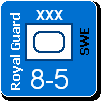







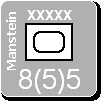
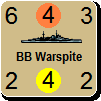

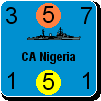
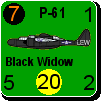
 >
> 

 . I would be happy to assist in certain specific questions, e.g. the example of choosing the action type. checking options and choices - if everything is covered, sort of playing the bad guy: what if this, what if that etc.
. I would be happy to assist in certain specific questions, e.g. the example of choosing the action type. checking options and choices - if everything is covered, sort of playing the bad guy: what if this, what if that etc.  - not a good start!)
- not a good start!)  New Messages
New Messages No New Messages
No New Messages Hot Topic w/ New Messages
Hot Topic w/ New Messages Hot Topic w/o New Messages
Hot Topic w/o New Messages Locked w/ New Messages
Locked w/ New Messages Locked w/o New Messages
Locked w/o New Messages Post New Thread
Post New Thread